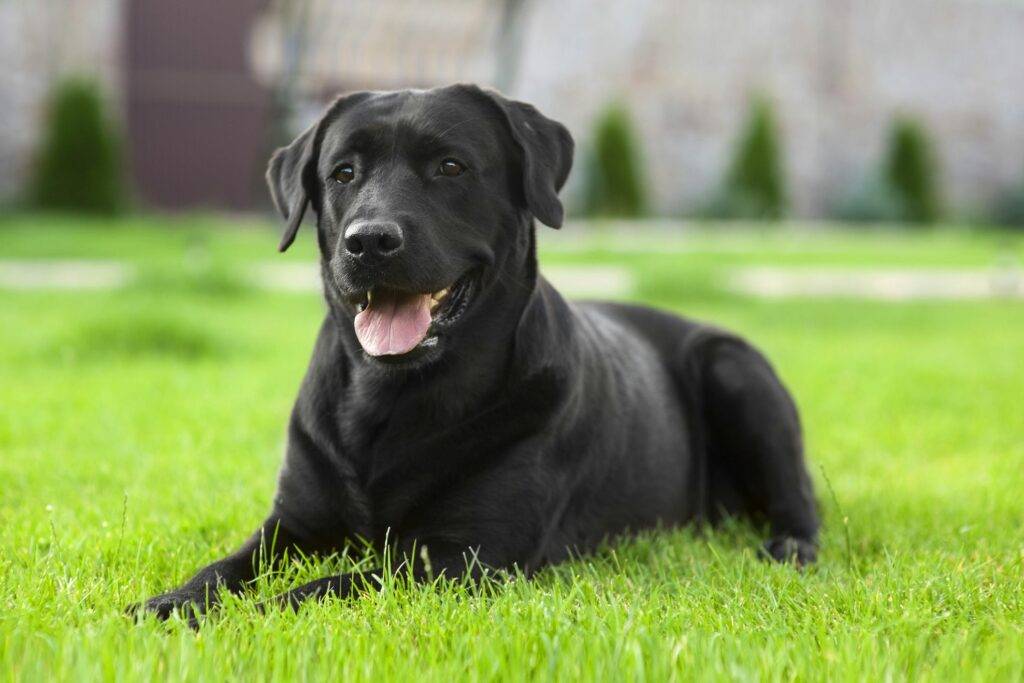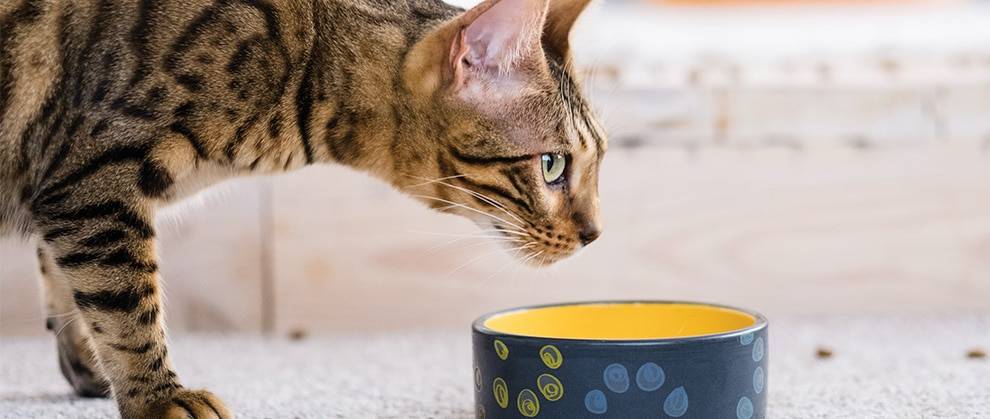[ad_1]
The Labrador Retriever approaches sports, work and life with boundless enthusiasm. His outgoing personality complements his athleticism and work ethic. Social and expressive, this Retriever is especially biddable to human direction. Labs are celebrated military and service dogs, therapy dogs, hunting dogs, sport stars and all-around companions.
Labrador Retriever is bred for athleticism
Ancestors of the Labrador Retriever worked with Newfoundland fisherman off the Labrador Sea shores. Their coats helped them tolerate the freezing salt spray and cold winds. They were developed with a strong retrieving instinct to retrieve fish and swimming lines and for the endurance to work the long hours required.
Because early Labs worked in all weather, on land and in water, they needed sturdy frames, hardy coats and resilient temperaments. Their webbed-paws came in handy for swimming, as did their otter-like tails. The Labrador Retriever’s watery ancestry helps explain the breed’s hunger for retrieving anything in water. Go ahead; toss a stick in the water and watch!
Known for family frolicking even after a hard day’s work, the early Labrador Retriever was energetic and approachable. British sportsmen noticed the Labrador’s swimming and hunting aptitudes, together with his exceptional disposition. The dogs were imported to England in the 1800’s for further hunting and retrieving development.
Labrador Retriever popularity
Today, the Labrador is the most popular breed in the United States (as well as the world) and is an excellent family dog. The breed shines in almost any sport, including rally, obedience, tracking, hunting, dock diving and field trials. Labs also use their strength and agility to help us in search and rescue, as well as water and avalanche rescue.
Why do Labrador Retrievers make great service dogs?
Retriever breeds are often selected for service work because of their consistent temperament and trainability. In fact, Retrievers are the most common breeds trained for service work, with Labs even chosen slightly more than Golden Retrievers. People appreciate how friendly and affectionate Labs are, how closely they bond to their handlers and how well they get along with other animals.
Service Labs may lead the vision-impaired, steady the physically impaired, or watch for signs of anxiety in a soldier with PTSD. Labs can be trained to alert diabetics when their blood sugar is off or warn allergy sufferers of a serious potential allergen, such as peanuts.
The military deploys Labradors as IED (explosive) detection dogs. The Department of Homeland Security has new interactive training tools for handlers of explosive detection canines to include Person-Borne Explosives Detection (PBED). These Labs (and other breeds) will detect and track moving explosives concealed on a person, helping, for example, to protect crowded venues from explosive threats.
Labrador Retrievers as hunting dogs
Renowned for their soft mouths to retrieve waterfowl and not damage prey, Labs are enthusiastic, all-star hunting dogs. Boasting great stamina, their readiness to hunt is matched only by their eagerness to please their humans (both during and after the hunt). Along with retrieving, Labs can be trained as trackers or pointers.
Most Labs, whether at play or work, seek out puddles, rivers, lakes, pools and let’s not forget mud! This dog breed is passionate about water and not shy about getting dirty.
Labrador Retriever personality

Labs are quick to learn the family’s rules and ready to obey. They thrive on yard retrieving games, including ball fetching and disc chasing. While the Lab excels in sports, he also can be a goofball and play with rambunctious puppy-like abandon at any age. Juveniles may be slow to mature. Why should they want to shorten the happy-go-lucky stage!?
The non-confrontational Lab isn’t typically shy with any species. Most Labs play cheerfully in the local dog park, even with brand new friends. Labs show a similar friendliness with new people; this breed isn’t suited for anyone wanting a guard dog. They’re not naturally suspicious by any means. The Labrador may bark to greet newcomers, but he won’t hurry potential playmates away. In general, children and Labs make a great pair. Labs were bred not to over-react, and to work in harsh conditions, so the breed generally accepts children’s innocent, rough mistakes, rather than striking back. That being said, children need to respect a dog’s space, and dogs need to be appropriately socialized to small children (read our article on meshing dogs and kids).
Labs can adapt to most living environments if their exercise needs are met, but clearly they’re not the #1 best apartment dog, like these lower-maintenance dogs. The breed need walks, directed interaction, swimming time, sport time, hiking time and a full schedule of inclusion.
Travel may be one of a Lab’s favorite pastime (ball fetching is likely #1!). Adaptable, hardy, generally quiet and not fussy, Labs make great on-the-go companions. Developed for harsher climates and rough terrain, Labs won’t fuss about hard ground tent camping, crossing streams or hiking in mud, rain or snow. The Labrador’s coat is travel ready: wash and wear! But don’t be fooled: He does shed, and certainly requires brushing.
At home, on vacation or in the field, today’s Lab aims to please. He’s a good choice for any owner wanting a sporty, upbeat companion but he’s also a good choice for novice owners. The Lab’s easy-going personality nicely matches him up with beginner dog families. He’s a forgiving breed when you mess up the training commands now and then.
Labrador Retrievers Bred for Field Work
Specialized breeding has led to noteworthy differences between field bred lines and show lines. Field Labs (bred as gun dogs, for hunt tests or field trials) often evidence a higher activity level than those bred for conformation and companionship.
Labradors are traditional bird dogs, used to help hunters hunt quail, ducks and pheasants. The Labs both flush and retrieve the birds. Labradors can also be trained to help hunt game such as deer and hog, by tracking their scent. Potential owners hoping to hunt with their Labs should make inquiries into breeding programs with field lines. With some exception, of course, most outstanding hunting dogs are bred from Labs with their own solid hunting histories.
Labrador Retriever Colors
The Labrador Retriever comes in three colors: chocolate, black and yellow. Some breeders are advertising and selling Labs with a dilute gray coat as “silver labs.” The Labrador Retriever Club (the AKC parent club for the breed) holds that a silver Labrador is not a purebred Labrador Retriever. The AKC has accepted some of these “silver labs” for registration, calling the silver color a shade of chocolate. The Labrador Retriever Club contends that the gray shade is likely a result of cross-breeding (Weimaraner), since the Lab has never been identified as carrying the dilute gene dd (which can lead to a silverish color).
Most diluted-color Lab breeders likely contend the rare dilute allele has always been part of the Labrador gene pool.
Labrador Retriever at a glance
Group: Sporting
Country of origin: Canada (Newfoundland)
Original use: Working for fisherman, pulling in nets and catching fish escaping from fishing lines; retriever of game.
Labrador retriever’s lifespan: 10 to 12 years.
AKC 2021 popularity ranking: The Labrador Retriever has been the number one most popular dog breed for many years.
Activity level: Labrador Retrievers have moderate to high energy levels. Field lines typically require the most exercise.
Weight: Lab males weigh 65 to 80 pounds; females 55 to 70 pounds. Puppies advertised as “Miniature Labradors” likely are bred from undersized parents.
Labrador Retriever grooming needs
Coat: Dense, short double-coated. The outer, guard coat facilitates the Labrador Retriever’s passion for swimming (swim, shake, dry, repeat). The soft undercoat adds warmth when needed.
Color: Labs are yellow, black and chocolate. Prospective owners should carefully research breeders charging premium prices for “silver” Labs
Shedding: Labs are moderate shedders. Short coats shed slightly more than we might expect.
Grooming: Brush regularly, bathe occasionally.
Special equipment: Labrador Retrievers love playing with lots of balls and retrieving toys.
Best for: Sporty singles, families.
Possible health problems: Labs can suffer from orthopedic issues.
Labrador Retriever breed quote if they had one: “Never, ever underestimate the importance of having fun.”(― Randy Pausch)
[ad_2]





